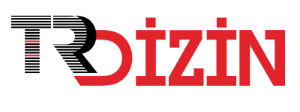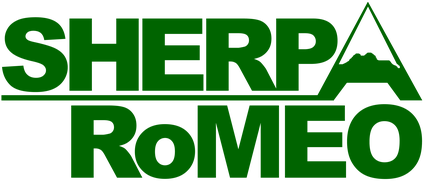An evaluation of the wastes and obstacles within the context of lean management in emergency services
DOI:
https://doi.org/10.26900/hsq.2572Keywords:
Hospital emergency services, decision making, lean six sigmaAbstract
The objective of this study is to evaluate the types of waste within the context of lean management practices in emergency departments and to provide recommendations for addressing the challenges associated with their implementation. The aim is to enhance the effectiveness of performance improvement processes and to improve patient satisfaction. The opinions of 8 experts in the field were collected and analyzed using fuzzy AHP. The analysis revealed that defects (29%) are the most common type of waste in emergency departments, with a significant impact on efficiency and patient safety. This is followed by extra handling (15%) and waiting time (13%). Addressing these issues, along with other types of waste such as wasted talent, movement, transportation, inventory, and overproduction, is critical to improving overall operational performance. The overcoming of integration challenges necessitates the implementation of a multifaceted strategy, which should encompass the commitment of leadership, the engagement of staff, and the establishment of a culture of continuous improvement. The success of lean management is contingent upon several factors, including leadership support, multidisciplinary collaboration, process streamlining, and the ability to navigate resistance to change.
Downloads
References
Malkoç BC. A private hospital application on lean performance system in hospital services [in Turkish]. Unpublished Master's Thesis]. Çağ University Mersin. 2019. Retrieved from: https://tez.yok.gov.tr/UlusalTezMerkezi/tezDetay.jsp?id=HfJqT_JlzSOk9sgcIk4kZw&no=tzfE6c6AZTdQ_qZ5ZeMJ2w (accessed: 21.09.2024)
Turkish Medical Association. Patient safety: Turkey and the world [in Turkish]. Füsun Sayek TTB Reports; 2011. Retrieved form: https://www.ttb.org.tr/kutuphane/fsayek10_hastaguvenlik.pdf (accessed: 21.09.2024)
Çelenk O, Topoyan M, Özçelik Kaynak K. Evaluation of emergency service workflows from the lean thinking perspective. J Soc Sci Inst Dokuz Eylül Univ. 2019;21(2):585-604. doi: 10.16953/deusosbil.426561.
Lopez PRA, Santos JF, Arbos LC. Lean manufacturing: costing the value stream. Ind Manag Data Syst. 2013;113(5):647-68. doi: 10.1108/02635571311324124.
Radnor ZJ. Review of business process improvement methodologies in public services. UK: AIM Research; 2010.
Graban M, Toussaint J. The Need for lean hospital. In: Graban M, (eds). Lean hospitals. USA: Productivity Press; 2016:1-22. doi.org/10.4324/9781315380827.
Silva TO, Vieira LM, Lemos TS, Sant'Anna FP, Sanches RS, Martinez MR. Hospital management and nursing management in light of lean healthcare philosophy. Cogitare Enferm. 2019;24. doi: 10.5380/ce.v24i0.60003.
Graban M, Kubik S. Lean hospitals—Improving hospitals: Improving quality, patient safety, and staff satisfaction. 2nd ed. USA: CRC Press, 2011. doi: 10.4324/9781315380827
Şimşek Ilkım N, Derin N. Lean management in healthcare with examples around the world and Turkey [in Turkish]. J Health Adm Hacettepe Univ. 2016;19(4):465-79.
Hicks C, McGovern T, Prior G, Smith I. Applying lean principles to the design of healthcare facilities. Int J Prod Econ. 2015;170:677-86. doi: 10.1016/j.ijpe.2015.05.029
Kimsey DB. Lean methodology in healthcare. AORN J. 2010;92:53-60. doi: 10.1016/j.aorn.2010.01.015.
Liker JK. The Toyota Way. Lean Constr Manag. USA: McGraw-Hill Global Education Holdings; 2014. doi: 10.1007/978-981-287-014-8_4.
Kabirinaeini M, Jamali H, Elahi Z. A framework for implementing lean management in the hospital emergency department. Trends Med Sci. 2023;3(2):e138624. doi: 10.5812/tms-138624.
Isfahani HM, Tourani S, Seyedin H. Features and results of studies using a lean management approach in hospital emergency departments: a systematic review. Bull Emerg Trauma. 2019;7(1):9-20. doi: 10.29252/beat-070102.
Elamir H. Improving patient flow through applying lean concepts to emergency departments. Leadersh Health Serv. 2018;31(3):293-309. doi: 10.1108/lhs-02-2018-0014.
Tanyıldızı İ, Demir Ö. Lean management in healthcare institutions [in Turkish]. Int J Econ Adm Fırat Univ. 2019;3(1):13-40.
D’Andreamatteo A, Ianni L, Lega F, Sargiacomo M. Lean in healthcare: A comprehensive review. Health Policy. 2015;119(9):1197-1209. doi: 10.1016/j.healthpol.2015.02.002
Souza DL, Korzenowski AL, Alvarado M, Sperafico JH, Ackermann AEF, Mareth T, et al. A systematic review of lean applications in emergency departments. Healthcare (Basel). 2021;9(6):763. doi: 10.3390/healthcare9060763.
Sivan K. Bilateral testicular evisceration sequel to trauma: challenges of management in emergency departments. Curr Res Emerg Med. 2021;1(3):1-3. doi: 10.54026/crem/1011.
Meidawati R, Arini M. The implementation of lean management in reducing waste in the emergency department. Multidiscip Sci J. 2024;6(8):2024132. doi: 10.31893/multiscience.2024132.
Alexander L, Moore S, Salter N, Douglas L. Lean management in a liaison psychiatry department: implementation, benefits, and pitfalls. BJPsych Bull. 2019;44(1):18-25. doi: 10.1192/bjb.2019.64.
Verbano C, Crema M. Applying lean management to reduce radiology turnaround times for emergency departments. Int J Health Plann Manage. 2019;34(4). doi: 10.1002/hpm.2884.
Chan H, Lo S, Lee L, Lo W, Yu W, Wu Y, et al. Lean techniques for the improvement of patient flow in emergency departments. World J Emerg Med. 2014;5(1):24-30. doi: 10.5847/wjem.j.issn.1920-8642.2014.01.004.
Lundkvist AH, Gustavsson M. Learning conditions for continuous improvement in a public service organization. J Workplace Learn. 2018;30(8):578-591. doi: 10.1108/jwl-03-2018-0049.
Özdemir B, Taşcı D. The impact of organizational resources on competitive strategies within the scope of resource based view: a research in top 1000 industrial enterprises of Turkey. Eskişehir Osmangazi Univ J Econ Adm Sci. 2020;15(3):1019-1042.
Önder G, Önder E. Analytic hierarchy processes. In: Yıldırım BF, Önder E (eds). Multicriteria Decision Making Methods [in Turkish]. Bursa: Dora Publications, 2015: 21-64..
Yang CC, Chen BS. Key quality performance evaluation using fuzzy AHP. J Chin Inst Ind Eng. 2004;21(6):543-50. doi: 10.1080/10170660409509433.
Van Laarhoven PJM, Pedrycz W. A fuzzy extension of Saaty’s priority theory. Fuzzy Sets Syst. 1983;11(1-3):229-41. doi: 10.1016/S0165-0114(83)80082-7.
Chang EC. Evidence for the cultural specificity of pessimism in Asians vs Caucasians: A test of a general negativity hypothesis. Pers Individ Differ. 1996;21(5):819-22. doi: 10.1016/0191-8869(96)00110-9.
Choosakun A, Yeom C. Developing evaluation framework for intelligent transport system on public transportation in Bangkok metropolitan regions using fuzzy AHP. Infrastructures. 2021;6(12):182. doi: 10.3390/infrastructures6120182.
Zhang W, Sun K, Lei C, Zhang Y, Li H, Spencer BF Jr. Fuzzy analytic hierarchy process synthetic evaluation models for the health monitoring of shield tunnels. Comput Aided Civ Infrastruct Eng. 2014;29(9):676-88. doi: 10.1111/mice.12091.
Azhir E, Daneshpour N, Ghanbari S. Fuzzy multi-criteria selection procedures in choosing data source. J Artif Intell Data Min. 2016;4(2):143-56. doi: 10.5829/idosi.JAIDM.2016.04.02.03.
Demir Uslu Y, Kedikli E, Yılmaz E, Çiçek A, Karataş M, Aydın S. Developing strategies for increasing Turkey’s market share in health tourism using the fuzzy AHP method. Gümüşhane Univ J Health Sci. 2021;10(2):159-71. doi: 10.37989/gumussagbil.869887.
Rane NL, Choudhary S. Fuzzy AHP and fuzzy TOPSIS as effective multi-criteria decision-making methods for subjective judgments in selection processes. Int Res J Mod Eng Technol Sci. 2023;5:3786-99. doi : 10.56726/IRJMETS36629.
Gedikli E, Uslu YD. Strategic pathway determination for a state hospital in terms of an integrated facility management system. In: Handbook of Research on Quality and Competitiveness in the Healthcare Services Sector. IGI Global; 2023: 404-38. doi: 10.4018/978-1-6684-8103-5.ch024.
Holden R. Lean thinking in emergency departments: a critical review. Ann Emerg Med. 2011;57(3):265-78. doi: 10.1016/j.annemergmed.2010.08.001.
Aij K, Rapsaniotis S. Leadership requirements for lean versus servant leadership in healthcare: a systematic review of the literature. J Healthc Leadersh. 2017;9:1-14. doi: 10.2147/jhl.s120166.
Prado J, García-Arca J, Fernández-González A, Mosteiro-Añón M. Increasing competitiveness through the implementation of lean management in healthcare. Int J Environ Res Public Health. 2020;17(14):4981. doi: 10.3390/ijerph17144981.
Marsilio M, Pisarra M. Lean management in healthcare: a review of reviews of socio-technical components for effective impact. J Health Organ Manag. 2021;35(4):475-91. doi: 10.1108/jhom-06-2020-0241.
Chan H, Lo S, Lee L, Lo W, Yu W, Wu Y, et al. Lean techniques for the improvement of patient flow in emergency departments. World J Emerg Med. 2014;5(1):24-30. doi: 10.5847/wjem.j.issn.1920-8642.2014.01.004.
Antonsen Y, Bye G. Lean task boards in healthcare: an improvement tool for tidying up local chaos and promoting professionalism. Res Sq. 2019. doi: 10.21203/rs.2.14372/v1.
Leite H, Williams S, Radnor Z, Bateman N. Emergent barriers to the lean healthcare journey: Baronies, tribalism, and scepticism. Prod Plan Control. 2022;35(2):115-32. doi: 10.1080/09537287.2022.2054386.
Rahmawati N, Munaa N, Ummah F. Lean healthcare implementation: how is the employee’s acceptance? Bio Web Conf. 2022;54:123-42. doi: 10.1051/bioconf/20225400020
Ng D, Vail G, Thomas S, Schmidt N. Applying the lean principles of the Toyota production system to reduce wait times in the emergency department. Can J Emerg Med. 2010;12(1):50-7. doi: 10.1017/s1481803500012021.
Rutman L, Stone K, Reid J, Woodward G, Migita R. Improving patient flow using lean methodology: an emergency medicine experience. Curr Treat Options Pediatr. 2015;1(4):359-71. doi: 10.1007/s40746-015-0038-0.
Chmielewska M, Lotek-Waćkowska R, Brzozowski S, Tytko Z, Dziok-Dmowska K, Hermanowski T. The capacity to implement lean management in the healthcare system in Poland – results of a public consultation. Med Pr. 2023;74(1):1-8. doi: 10.13075/mp.5893.01303.
Marsilio M, Pisarra M, Rubio K, Shortell S. Lean adoption, implementation, and outcomes in public hospitals: benchmarking the US and Italy health systems. BMC Health Serv Res. 2022;22:122. doi: 10.1186/s12913-022-07473-w.
Woodhouse L, Toal R, Nguyen T, Keene D, Gunn L, Kellum A, et al. A merged model of quality improvement and evaluation. Health Promot Pract. 2013;14(6):885-92. doi: 10.1177/1524839912474464.
Hwang P, Hwang D, Hong P. Lean practices for quality results: a case illustration. Int J Health Care Qual Assur. 2014;27(8):729-41. doi: 10.1108/ijhcqa-03-2014-0024.
Downloads
Published
How to Cite
Issue
Section
License
Copyright (c) 2025 Holistence Publications

This work is licensed under a Creative Commons Attribution 4.0 International License.
When the article is accepted for publication in the HSQ authors transfer all copyright in the article to the Holistence Academy Ar-Ge Yazılım Yayıncılık Eğitim Danışmanlık ve Organizasyon Ticaret Ltd. Şti.The authors reserve all proprietary right other than copyright, such as patent rights.
Everyone who is listed as an author in this article should have made a substantial, direct, intellectual contribution to the work and should take public responsibility for it.
This paper contains works that have not previously published or not under consideration for publication in other journals.















